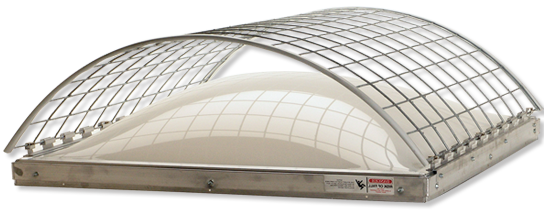Daylighting is the admission of natural light into an environment, using strategically placed windows or skylights, or electronic sensor systems that adjust artificial light dispersion into a space. Daylighting not only lets light into an office or a room, but it also improves the mood of the room’s occupants, as well as their overall performance. The Heschong Mahone Group found that office workers who were provided with a better indoor work environment, including daylight or an outdoor view, performed 10-25 percent better on mental function and memory recall tests, were less likely to take sick days, and worked 6-12 percent faster than their normal average. Additionally, in a test run by Walmart, they discovered that departments in the store that had more access to natural light saw more customers buying products than in other areas heavy with artificial lighting.
The overall objective of daylighting is to maximize on the use of natural light, in an effort to conserve budgets and be energy efficient. Modern day business buildings create lots of heat due to their significant energy expenditure, thereby needing significant cooling to keep buildings at ideal temperatures. Daylighting cuts that energy fluctuation by almost 30 percent. Natural light means electricity is not as heavily needed, therefore the office temperature stays considerably low, and ACs are not as heavily needed to regulate. So daylighting not only significantly cuts electricity costs, but HVAC costs as well.
Ideally, daylighting does not only involve the installation of windows and skylights. It should be thought of at the conception of a building project, so that the builder can incorporate daylight-responsive lighting control systems. These types of systems can gauge how much light is coming into the building, and can adjust power usage accordingly. This advanced preparation would also assist in deciding on skylight or window placement, to avoid glare and the ultimate need for shades or blinds to be installed. So in order for daylighting to work perfectly, it should go beyond a simple list of components put together, and rather should be integrated into the design of a building.
However, perfect planning rarely occurs. And although the ultimate daylighting experience can truly be achieved when daylighting is at the forefront of the plans, it can still be achieved in impactful ways via the installation of skylights. There are two different types of daylighting: active and passive. Active daylighting is when an electronic control system is installed in a building that manages and times the admittance of artificial light. The sensors detect how much natural light is in the environment, and adjust the artificial light accordingly. Passive daylighting is when windows and skylights are installed in buildings, to admit natural light.
Although active daylighting seems ideal, it can be incredibly costly and expensive to manage. However, Plasteco’s durable skylights can be installed in any buildings and at any phase of your building project, giving your business or construction initiative the natural daylight it needs. With more than 50 years of experience in the industry, our skylights have a proven track record and everlasting quality you can rely on.
Whether your project is a new construction or a retrofit, choose a provider who can do it all. Turn to Plasteco for all your skylight design and installation needs, and make daylighting work for your project.
Sources:
What You need to Know About Daylighting


